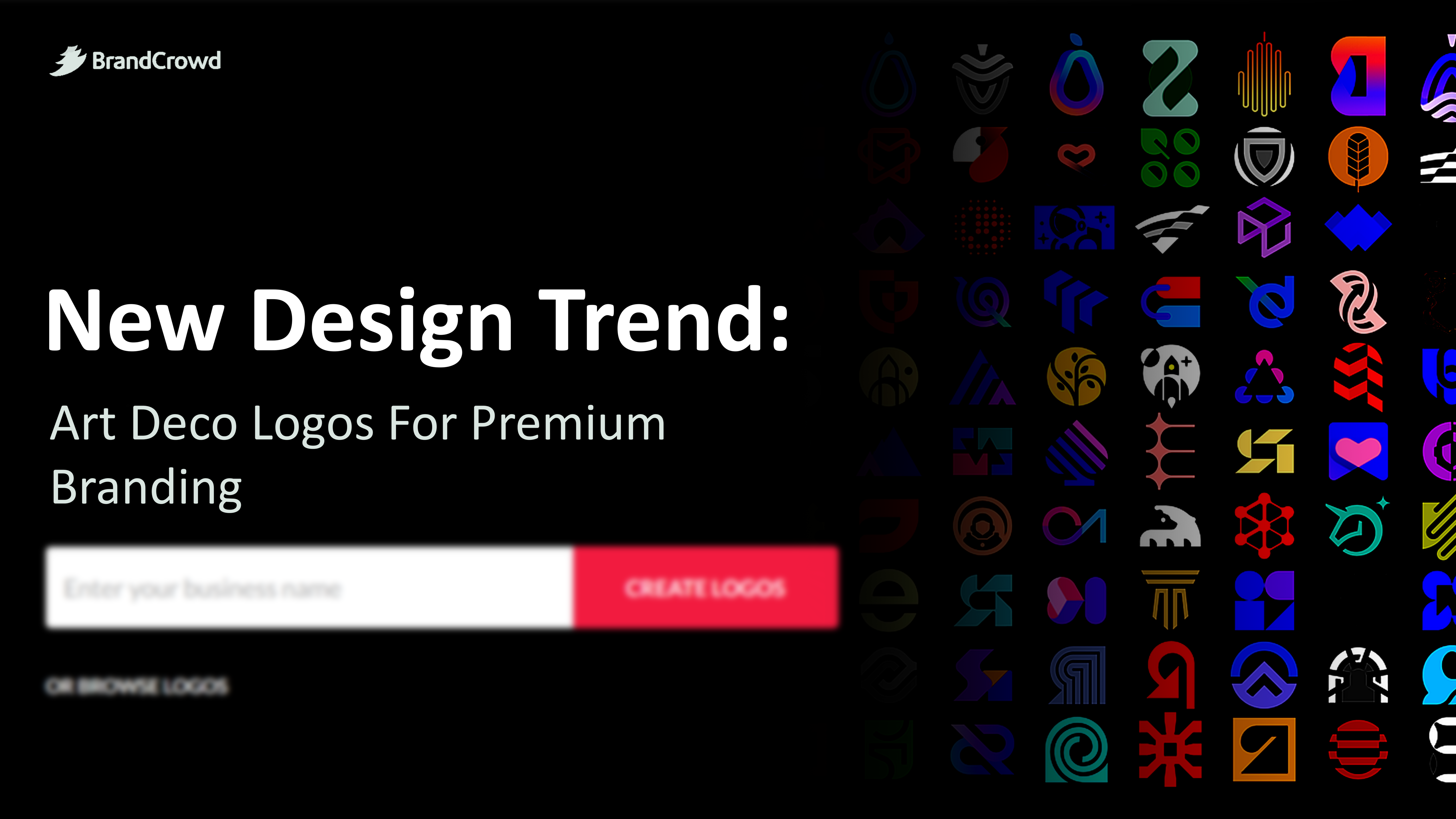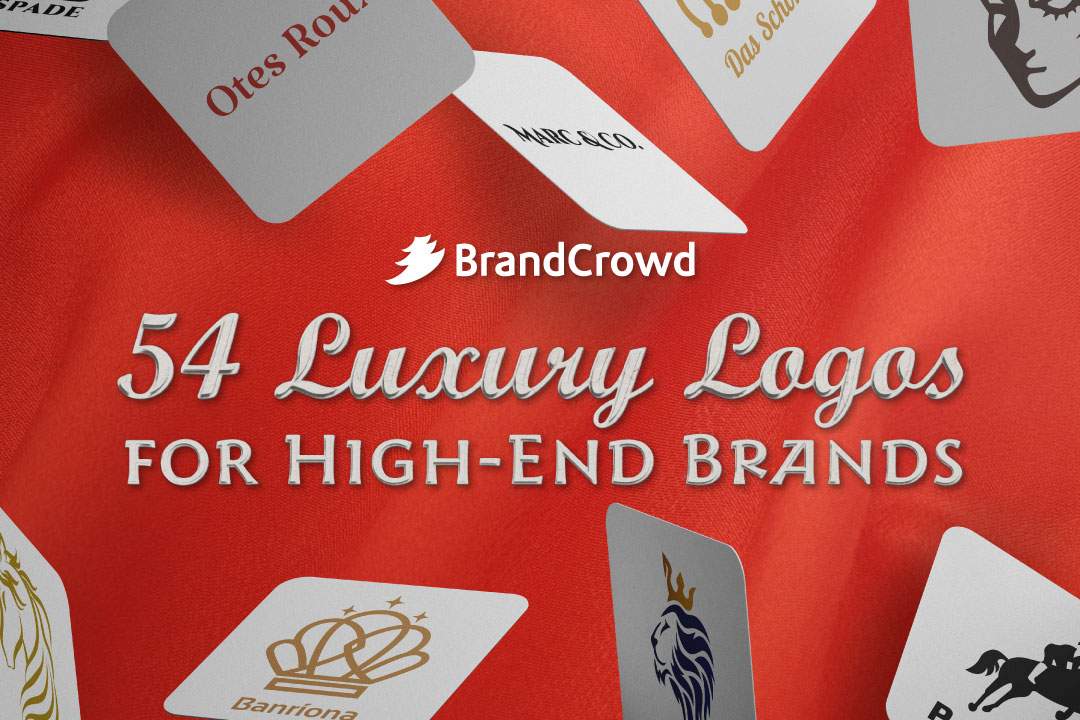New Design Trend: Art Deco Logos For Premium Branding
For much of the pre-war world, there was a dominating design trend sweeping Europe and America. Art Deco designs influenced everything — from the tallest skyscrapers to the lowest of rugs in manors. Today, although not a mainstream concept, its influence still looms large for creatives who want to tap into its allure.
Art Deco, a design movement that originated in the 1920s and 1930s, is known for its bold geometric shapes, rich colors, and lavish ornamentation. It represents luxury, glamour, and exuberance, making Art Deco logo designs a perfect choice for businesses aiming to convey sophistication and elegance.
For small to average business owners planning to create their own logo design, understanding the Art Deco style could be a game-changer. With the logo maker tool, non-designers and beginners can enter a market with style. And even for seasoned businesses, having a revamped art-deco logo design might renew interest in your brand.
Want some inspiration to boost your campaign? Treat this article as your go-to guide for the wonderful world of Art Deco and Art Deco logo design style. Let’s get into it.
What is Art Deco?
Art Deco was a prominent design style from 1910 to the early 1930s. Art Deco was the premier design choice for architecture, interior design, furniture, product design, and graphic design.
Nowadays, Art Deco is no longer a mainstream trend because of its luxurious, expensive, and affluent materials. However, businesses and organizations still borrow some of its design features and principles to communicate premiere and luxury styles.
In logos, art decos are characterized by gold, black, white, and jade colors like red and green. It is also famous for its geometric lines, shapes, intricate patterns, arches, points, and more.
An Art Deco logo is all about luxury. That is the goal of every designer who chooses an art deco because of its rich history. Art Decos decorate some of the best buildings and hotels in the world, such as Chrysler, Claridge’s, and Empire State. The style is also clearly visible in the works of Legrain and Ruhlmann.
Industries Perfect for Art Deco Logo
There are some industries where an Art Deco logo would be perfect. Because of its incredible luxury appeal, the Art Deco logo is appropriate for a certain target market. Here are some industries and their specific art deco logo design edges.
- Fashion: Emphasizes sleek lines and glamorous motifs, fashion logos often using gold and silver accents to signify opulence.
- Hospitality: Features grandiose elements and symmetrical designs, the hospitality industry is famous for creating an inviting yet sophisticated atmosphere.
- Entertainment: Utilizes bold, dramatic designs with vibrant colors and intricate patterns to captivate and enchant audiences.
- Real Estate: Adopts clean, geometric shapes and lines, conveying stability and luxury.
- Automotive: Integrates streamlined, aerodynamic shapes to symbolize speed and refinement.
- Jewelry: Focuses on precision and intricacy with delicate patterns and luxurious color palettes.
- Cosmetics and Perfumes: Uses elegant, symmetrical designs and soft, inviting colors to evoke a sense of beauty and sophistication.
How to create your own Art Deco logo
Creating an Art Deco logo involves several steps, especially for beginners looking to capture the elegance and sophistication of this style.
Here’s a guide to help you through the process:
- Research Art Deco: Familiarize yourself with Art Deco’s history, key elements, and iconic designs. Look for patterns, motifs, and color schemes that define this style.
- Define Your Brand Identity: Consider how Art Deco’s characteristics can reflect your brand’s values and target audience. Luxury, elegance, and vintage appeal should align with your brand’s message.
- Sketch Your Ideas: Start with paper and pencil to sketch various concepts. Focus on geometric shapes, symmetry, and stylized fonts characteristic of Art Deco.
- Select a Color Palette: Choose colors that evoke luxury and sophistication. Gold, black, and jewel tones are popular in Art Deco designs.
- Incorporate Geometric Shapes and Lines: Use bold, streamlined shapes and sharp lines to create a sense of order and balance in your design.
- Choose a Stylish Font: Art Deco fonts are typically bold and stylized. Look for fonts that reflect the era’s typography.
- Use Design Software: Transfer your sketch to digital format using design software. This allows you to refine your logo, experiment with colors, and adjust elements precisely.
- Feedback and Refinement: Share your design with others to get feedback. Be open to making adjustments to improve the logo’s clarity and impact.
- Finalize Your Design: Once satisfied, finalize your logo design. Ensure it scales well across different media, from digital platforms to print.
Conclusion
Creating an Art Deco logo is a journey back to an era of glamour and elegance, blending modern brand needs with vintage style.
It’s about capturing the essence of sophistication through geometric shapes, luxurious colors, and bold typography.
This process invites you not just to design a logo but to weave a narrative of opulence and timelessness, making your brand’s visual identity truly stand out.
Keep your design simple, yet make every element meaningful. Accompany it with flyers, and business cards and your Art Deco brand is ready to stun.



